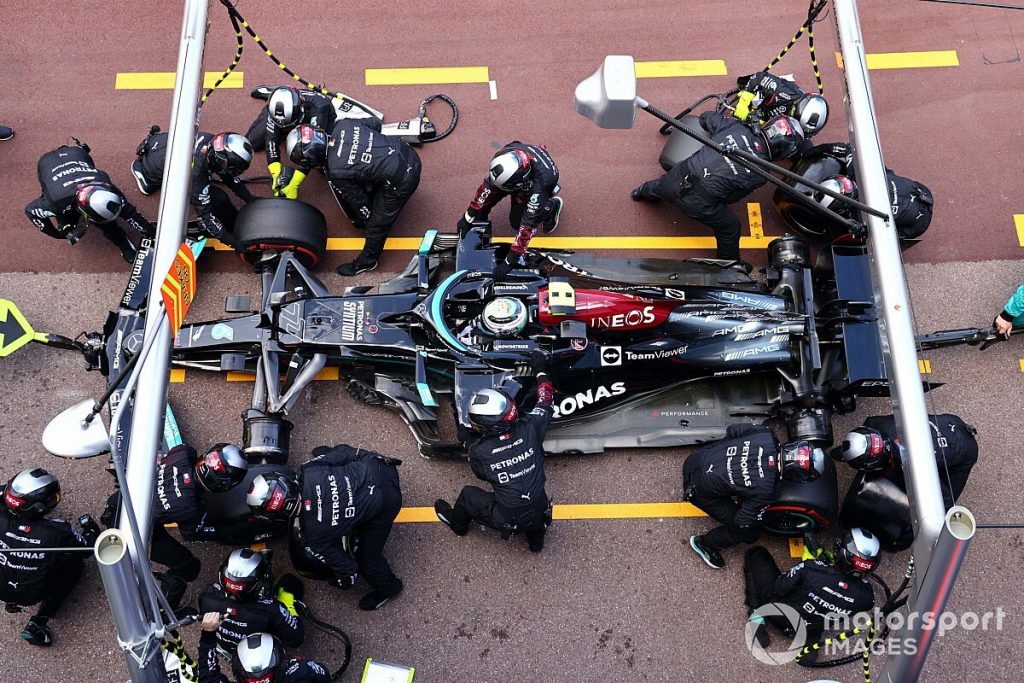Do you feel the need for speed?

In motor racing, speed is almost everything. Racing tracks are a mixture of tight-bends and straights. Without raw speed you can’t overtake and you can’t stay ahead. Speed is the key to winning races and championships. There’s a need for speed.
Making your car the fastest down the straights will bring a huge advantage. But if your car’s the slowest around the bends, any good work on the straights will come undone. The same goes for the start. That’s where racing places can be quickly won and lost. Speed is needed in every element of the race. So, if you’re the fastest in every element, you should win every race.
The design, engineering and building of racing cars are all critical parts of the manufacturing process. Speed comes from successfully balancing design technology, mechanical engineering, aerodynamics and the use of composite materials. And then there’s human skill. Winning teams very successfully blend all these elements. There’s no finer example of this than the pit-stops. At least once a race, your car’s tyres have to be changed.
The Pit Crew
The work of pit-crews is legendary for its speed. Imagine how long it would take you to change all four tyres on your car. You’d have to jack up each wheel in turn, take all four wheels off and replace each of them, one at a time. Many modern cars don’t carry a spare wheel, let alone four of them.
In Formula 1, changing the tyres is faster, much faster. It typically takes between 2 and 4 seconds to change all four tyres and clear the car to drive off. That’s probably faster than it takes us to get the manual out of the glove compartment.
How many people does it take to change the tyres on a Formula 1 car?
The answer is at least 21. First there are the front and rear jacks, who use specialist ramps to lift the car up, with back-up jacks for each of them. Then there are four people to take the old tyres off and four more to put the new tyres on. That’s twelve people already.
Then there are four tyre gunners to undo and tighten the wheel nuts, two stabilisers to keep the car steady; and two front wing adjusters (one for either side). Finally, there’s the lowest tech job of them all, but the most important. In the high-tech world of Formula 1, it’s the pit-team member carrying the lollipop sign that has the final say. Once they’re happy, the car is free to go.
Some teams have additional crew members to clear debris from the radiator; and wipe the driver’s helmet visor and oversee the actions of the others. So you could have a crew of 23.
The organisational design for Formula 1 tyre-changes is extremely impressive. So is the technology in the wheel design, pneumatic tyre guns and moveable jacks. But most impressive of all is the human precision and teamwork. That’s especially impressive for two reasons. Firstly, at least twenty-one people are huddled around the same car, performing interactive split-second movements. And secondly, because all of those pit-stop crew members have other jobs in the team. They’re not a specialist pit crew, they’re car mechanics first and foremost.
How do they do it?
So how do they do it so fast? The same way all great teams become great. Planning, preparation and practice. By scenario planning for all the likely eventualities (the ‘known knowns’), a pit crew can repeatedly practice and prepare until it’s really good. By scenario planning for more unlikely eventualities (‘known unknowns’) as well, it can prepare and practice until it becomes even more capable.
How do you know which scenarios to prepare for? Which ones will make the difference to winning races? It’s those winning controllables that matter most. In every walk of life, we have to work out which of the many controllables we really need to master.
Honing all of the necessary processes and routines will always bring us more chance of success. Personal training for skill and technique will adds extra value, but only where it makes a material difference to winning. Training as a team adds more value too, as long as it’s relevant and gets you more win ready.
Each part of a tyre change can be practiced alone and in small teams, but it’s not until the whole comes together that success can be delivered. If even one tyre change is late, the car cannot go. That’s the same for many operational teams. What’s the winning formula?
Every team can learn from a Pit Crew
This pit-lane process is a microcosm of organisational operation. It reminds us that each component of our organisations are vital in their own right. Tyre-changes need the same level of detail and attention as the big picture of winning championships. The mission has to be simplified and crystal clear (change all four tyres as fast as possible). The resources have to be available and cutting edge (all the best kit and technology). Responsibility and authority have to be appropriately and consistently allocated (delegated mission control).
And crucially, all possible scenarios have to be planned, prepared for and practised until they’re almost automatic. There’s an acronym for team preparation that summarises what’s needed. TYRES. Till You’re Ready Every Scenario matters.
Speeding to success
Success comes from establishing which elements to focus on (the Winning Controllables) and which outcomes to prepare for (Scenario Planning). Then you can practice them at ever increasing speed.
